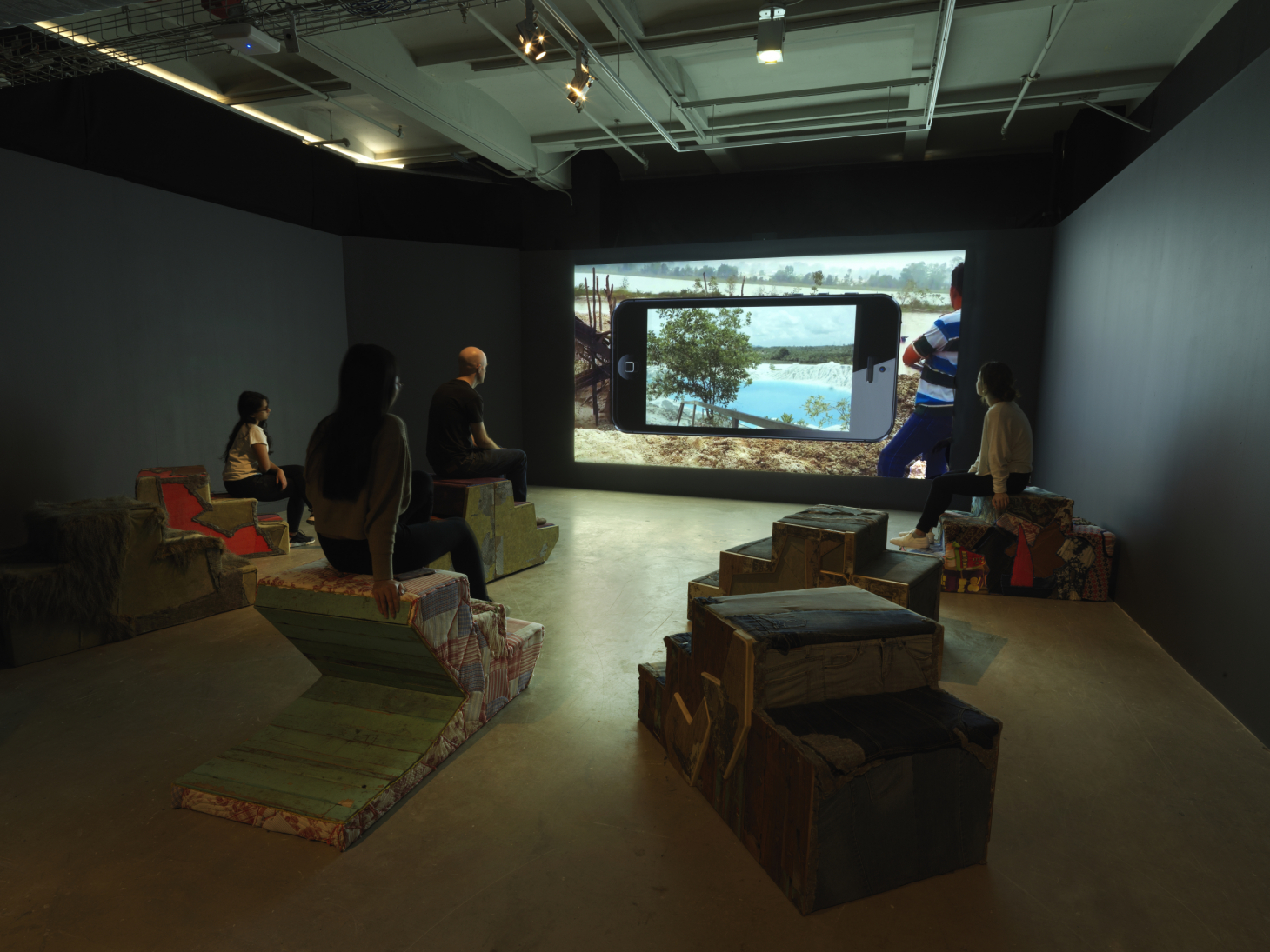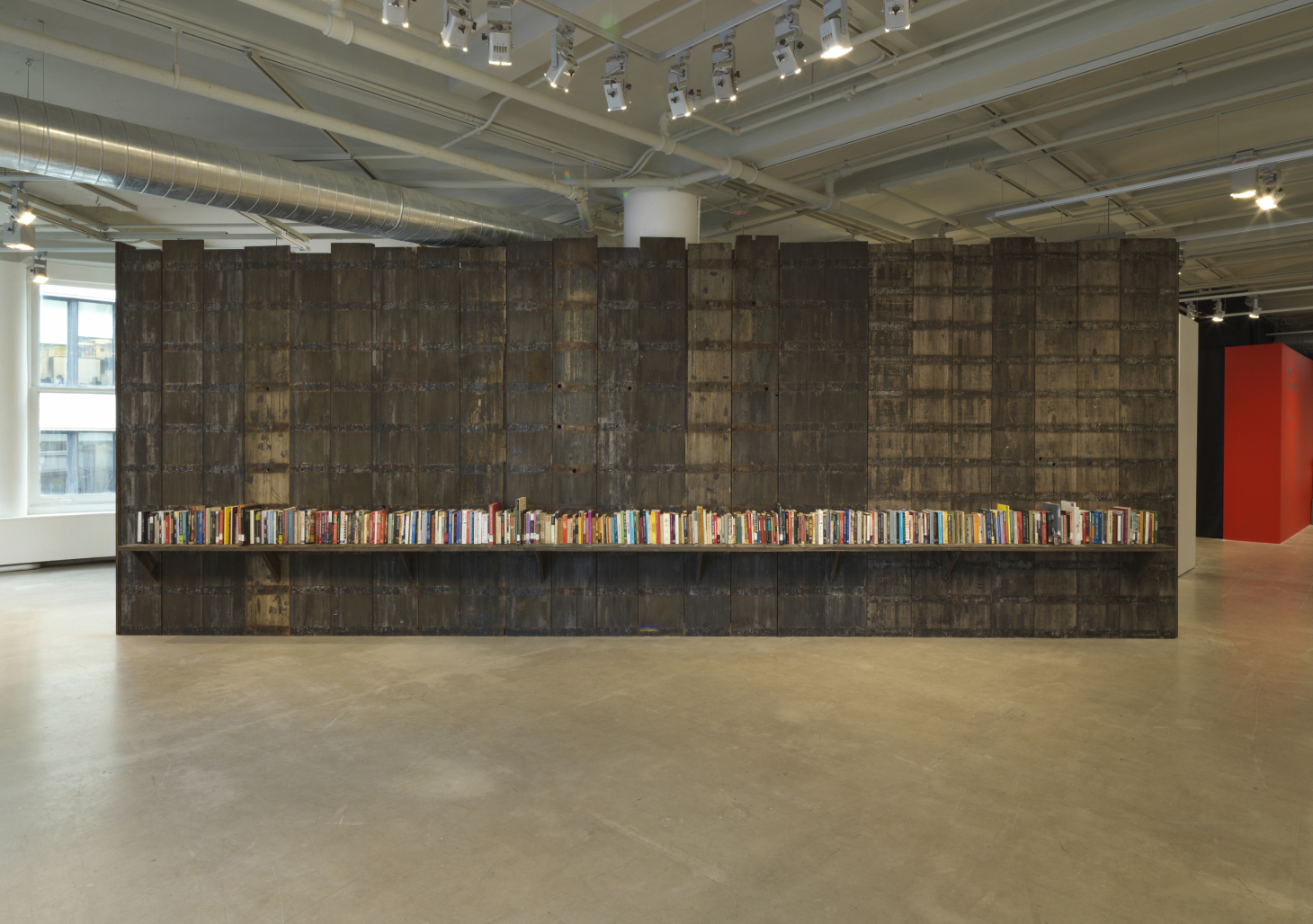Published in Hyperallergic November 19, 2019. ︎
The Endless Work of Labor in the Age of Global Production
A tech worker recently told me, “In ten years, I bet grocery stores will not even have checkout lines.” His guess hints that the rapidly changing nature of work. Depending upon one’s status, changes caused by technology and expansion may be worrying or profitable. Re:Working Labor, a surprisingly global exhibition presented in the School of the Art Institute of Chicago (SAIC)’s Sullivan Galleries, attempts to interrogate these shifts.
The exhibition is presented as a linear path, with the first several gallery spaces presenting filmic renderings of the monotony of modern work. Nine collaborative films hang from the ceiling, at eye-level, in Antje Ehmann, Harun Farocki, and Eva Stotz’s Labour in A Single Shot (2011). Labour invites participants to respond to working characteristics of their respective cities with short films. Within RE:WORKING LABOR, the screening program Image Employment (curated Aily Nash and Andrew Norman Wilson) demands attentive viewing of recent moving image works, with its loop beginning daily with the gallery’s opening. The films move from the offices of an international accounting firm (Pilvi Takala’s The Trainee) to a quick-paced Chinese factory (Cao Fei’s 11:11) to the planning of a weekly lesbian party in LA (Leilah Weinraub’s SHAKEDOWN). The program ends promptly at 6PM, a workday in itself. Tucked within its own darkened theater, viewers are invited to sit on stoops fabricated by artist John Preus with Chicago Public School (CPS) students, with materials solemnly sourced from closed CPS buildings.
Several works in Re:Working Labor reflect artists’ personal experiences of labor through installation. Ibrahim Mahama built the “library of kąrî’kạchä seid’ou,” as an homage to seid’ou, a renowned professor in the Fine Arts Department at K.N.U.S.T Kumasi. The library is built of reclaimed shipping containers stained by years of transport; books focusing on labor theories, art, and revolutionary pedagogy sit upon the discolored wooden shelves. “Ballad of the Uprooted” (2019), an installation by Deanna Ledezma, Josh Rios, and Anthony Romero, presents archival materials that explore migrant crop workers’ narratives — an inseparable display of parafictional and actual accounts. An accompanying take-away zine includes Ledezma’s reflection on research trips she took with Rios, as well as an interview with her father, who worked at a pecan orchard and guest ranch. In “The Meeting Game (in progress),” Caroline Woolard places stress ball-like anonymous objects around a mundane conference table, giving imagined white-collar workers something to do with their hands.
Broadly speaking, Re:Working Labor asks us to locate our respective places in the global labor chain. Through a wide range of artist projects and programs, it attempts to answer this question with the school’s students, educators, laborers, and artists. While the exhibition asks many questions about what labor is and its future, unasked questions loom: Are different forms of labor comparable? What can art do about it? Will we live like this forever?




All images courtesy of Sullivan Galleries